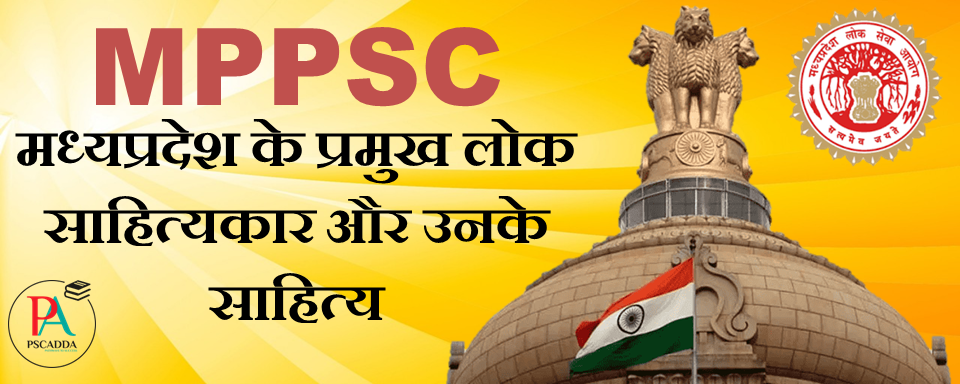मध्यप्रदेश के प्रमुख लोक साहित्यकार और उनके साहित्य folk writers of Madhya Pradesh and their literature
जगनिक :-
जन्म- संवत 1208 , आचार्य रामचंद्र शुक्ल के अनुसार जन्म 1230 संवत
संरक्षण- कालिंजर नरेश परिमल देव के दरबार में जगनिक न सिर्फ कवि थे बल्कि योद्धा भी थे।
रचना -परमाल रासो या आल्हा खंड
विशेषता- जगनिक का परमाल रासो , आल्हा खंड वीर रस की भावना से ओतप्रोत ग्रंथ है , जिसमें वीर सैनिक आल्हा एवं उदल की वीर गाथाओं का वर्णन करते हैं ।
जगनिक के हिंदी साहित्य के वीरगाथा काल के कवि माने जाते हैं इन्हें आदिकवि चंदबरदाई के समकालीन माना जाता है।
जगनिक कहते हैं कि आल्हा ऊदल महोबा छोड़कर जय चंद्र के पास कन्नौज चले गए जब जगनिक को ही दूत बनकर उन्हें फिर से महोबा लाने भेजा था ।
आल्हा खंड प्राचीन काल मौखिक परंपरा में जीवित रहकर निरंतर लोकप्रिय बना रहा, 1965 में चार्ल्स इलियट ने आल्हा खंड का पहली बार प्रकाशन करवाया। इसी प्रकाशन के आधार पर श्यामसुंदर दास ने परमाल रासो प्रकाशित करवाया इसकी भाषा बुंदेलखंडी थी। folk writers of Madhya Pradesh and their literature
साहित्यिक विशेषताएं –
आल्हा खंड में आल्हा और उदल की 52 कथाओं का संपूर्ण वर्णन है यह वर्णन 20 वीर छंद से ओतप्रोत है । जिससे पूरा आल्हा खंड लिखा गया है आल्हा प्राय: वर्षा ऋतु में गाए जाते हैं । आल्हा गाना और सुनना दोनों ही गौरव का हिस्सा बन गया है। आल्हा खंड विश्व की सबसे लंबी लोककथा है इस ग्रंथ में शौर्य और श्रंगार के अनेक प्रसंग मिलते हैं।
संत सिंगाजी :-
जन्म- वैशाख सुदी नवमी संवत 1576 मैं हुआ ।
जन्म स्थान- बड़वानी स्टेट के ग्राम खजुरी।
संत सिंगाजी मेवाड़ अंचल के लोक निर्गुण भक्ति धारा के कवि थे।
सिंगाजी के जीवन के कार्यों का उल्लेख उन के शिष्य खेमा रचित ‘परचुरी’ नामक पुस्तक में मिलता है।
यह पशुपालक जाति से थे।
मृत्यु – सावन शुल्क नवमी संवत 1616 को समाधि लेकर इन्होंने अपना देह त्याग दिया।
यह पिपलिया गांव (जिला खरगोन ) में आकर रहने लगे यही समीप में उनकी समाधि बनाई गई है। यहाँ प्रतिवर्ष मेला लगता है, उनकी समाधि स्थल अब सिंगाजी गांव के रूप में जानी जाती है।
रचनाएं –
साखी, भजन , दृढ़ उपदेश, आत्मध्यान, दोषबोध, नारद ,शरद देश की वाणी, वाणावली,सातबार ,पंद्रह तिथि, बारहमास।
मध्य प्रदेश आदिवासी लोक कला परिषद द्वारा भोपाल द्वारा 1996 में डॉ श्रीराम परिहार की पुस्तक ‘कहे जन सिंगा’ पुस्तक का प्रकाशन हुआ जिसमें सिंगाजी की 108 प्रमाणिक लोग पदों का संकलन व अनुवाद किया गया है ।
साहित्यिक विशेषताएं-
सिंगाजी की रचनाओं में कबीर के दोहे देखने को मिलते हैं।
सिंगाजी निर्गुण निराकार परब्रह्म उपासक थे इन्हीं का वर्णन इन के साहित्य में देखने को मिलता है। सिंगाजी के काव्य की भाषा निमाड़ी है साहित्य में स्थान संत सिंगाजी का निमाड़ी लोक जीवन पर गहरा प्रभाव रहा है ।
आज भी निमाड़ के गांव में सिंगाजी के भजन को गाया जाता है वह मंडलिया भी हैं संत सिंगाजी निमाड़ संतों के सूर्य हैं इन्हें निमाड़ का कबीर भी कहा जाता है आज भी निमाड़ में जन-जन उन्हें श्रद्धा से याद करता है। folk writers of Madhya Pradesh and their literature
ईसुरी :-
जन्म-चैत्र सुदी 10 संवत 1898 •जन्म स्थान- ग्राम मेढ़की मऊरानीपुर जिला झांसी उत्तर प्रदेश।
इनकी सबसे बड़ी देन –फाग का अविष्कार।
पिता- पंडित भोलानाथ तिवारी
रचना-
1. ईसुरी की फागें – संकलनकर्ता कृष्णानंद गुप्त 2. ईसुरी प्रकाश( गौरी शंकर द्विवेदी) 3. ईसुरी सतसई (गुण सागर सत्यार्थी)
ईश्वरी अपनी प्रेमिका रजऊ के सौंदर्य से प्रभावित थे मैं उनके प्रेम एवं विरह उनके काम की प्रेरणा रही है।
विशेषता –
इन्होंने बुंदेली फाग चौकड़िया का सर्वप्रथम आरंभ किया यह काव्य प्रतिभा आशु विलक्षण कवि थे ।
इन्हें बुंदेलखंड के जयदेव के रूप में जाना जाता है।
ईसुरी ने अपने काव्य में श्रृंगार और प्रेम के समस्त शिखरों को छुआ है, इन्होंने लोग जीवन के विविध पक्षों के साथ-साथ व्यक्तिगत अनुभूतियों पर भी अपना काम का विषय रखा है।
इन्होंने चार चरण या कड़ियों वाली फागों का भी अविष्कार किया है।
इन्होंने अपनी भागों में सामाजिक कुरीतियों पर प्रहार किया है, जिसमें देश के प्रति प्रेम झलकता है।
भाषा शैली इन्होंने अपने काम में बुंदेली शब्दों का इतना सरल और स्वाभाविक प्रयोग किया है कि उसे कोई भी समझ सकता है ।
साहित्य में स्थान –
ईश्वरी को बुंदेली भाषा का प्रतिनिधित्व कवि के रूप में जाना जाता है बुंदेलखंड की असली फ़ाग आज भी जन-जन की जुबान पर हैं। folk writers of Madhya Pradesh and their literature
घाघ :-
जन्म – संवत 1753 के लगभग कन्नौज या उसके निकट।
घाघ कवि ज्योतिष और नीति संबंधी ज्ञान रखते थे।
कृषि को सर्वोत्तम व्यवसाय बताया है, कृषि पंडित एवं व्यावहारिक पुरुष (उपनाम) होने के नाते इन्हें घाघ नाम से भारत में जाना गया। वह बैल खरीदना हो या खेत जोतना हो ,बीज बोना हो, या फसल काटना हो घाघ की कहावतें उनकी पथ प्रदर्शक थी ।
यह कहावतें आज भी मौखिक रूप से उत्तर भारत में प्रचलित है । वह ब्राह्मण थे और वे धार्मिकता में काफी कट्टर थे।
रचना–
घाघ और भंडारी संकलनकर्ता पंडित रामनरेश त्रिपाठी
पंडित राम नरेश त्रिपाठी ने घाघ की रचनाओं का संग्रहित कर 1931 हिंदुस्तानी अकादमी इलाहाबाद में प्रकाशित किया घाघ और भंडारी नामक संकलन घाघ की रचनाओं का एकमात्र प्रमाण है।
काव्यगत विशेषताएं इन्होंने मौसम वर्षा, खेती ,भोजन ,स्वास्थ्य से संबंधित महत्वपूर्ण रचनाएं की ।
खेती के संदर्भ में उन्होंने अनेक कथन कहे जो आज वैज्ञानिक सलाह के रूप में महत्त्व रखते हैं ।
यह व्यावहारिक ज्योतिषी थे ।मौसम के बारे में हवा चलते ही यह बता देते थे कि कितनी वर्षा होगी।
भारतीय कृषि विज्ञान में घाव का विशिष्ट स्थान है। folk writers of Madhya Pradesh and their literature
Prominent folk writers of Madhya Pradesh and their literature
Jagnik :-
Birth- Samvat 1208, according to Acharya Ramchandra Shukla, born 1230 Samvat
Patronage- In the court of Kalinjar King Parimal Dev, Jagnik was not only a poet but also a warrior.
Composition –
Parmal Raso or Alha Khand
Specialty-
Jagnik’s Parmal Raso, Alha Khand is a book filled with the spirit of Veer Rasa, in which brave soldiers describe the heroic stories of Alha and Udal.
Jagnik is considered to be the poet of Veergatha period of Hindi literature, he is considered contemporary of Adikavi Chandbardai.
Jagnik says that Alha Udal left Mahoba and went to Kannauj to Jai Chandra when Jagnik was sent as a messenger to bring him back to Mahoba.
The Alha Khanda continued to be popular by surviving in the ancient oral tradition, in 1965 Charles Eliot got the Alha Khanda published for the first time. On the basis of this publication, Shyamsundar Das got Parmal Raso published, its language was Bundelkhandi. folk writers of Madhya Pradesh and their literature
Literary features –
Alha Khand has a complete description of 52 stories of Alha and Udal, this description is full of 20 heroic verses. From which the entire Alha Khand is written. Alha is usually sung in the rainy season.
Both singing and listening to Alha have become a part of pride. Alha Khand is the longest folk tale in the world, many episodes of valor and adornment are found in this book.
Saint Singaji: –
Birth- happened in Vaishakh Sudi Navami Samvat 1576.
Place of Birth- Village Khajuri of Barwani State.
Saint Singaji was the poet of Lok Nirgun Bhakti stream of Mewar region.
The works of Singaji’s life are mentioned in the book ‘Parchuri’ written by his disciple Khema.
He was from the animal husbandry caste.
Death –
He left his body after taking Samadhi on Sawan fee Navami Samvat 1616.
He came to Piplia village (Khargone district) and started living there, where his mausoleum has been built. A fair is held here every year, his tomb is now known as Singaji village.
Compositions –
Sakhi, Bhajan, Strong sermon, Aatmdhyan, Doshboadh , Narad, Sharad Desh Ki Vani, Vanavali, Satbar, pandrah tithi, Barahmas.
In 1996, Dr. Shriram Parihar’s book ‘Kahe Jan Singa’ was published by Madhya Pradesh Adivasi Lok Kala Parishad, Bhopal, in which 108 authentic verses of Singaji have been compiled and translated.
Literary features –
Kabir’s couplets are seen in Singaji’s works.
Singaji was a worshiper of Nirgun formless Parabrahma, his description is seen in his literature. The language of Singaji’s poetry is Nimadi. Saint Singaji’s place in literature has had a deep impact on Nimadi folk life.
Even today in the village of Nimar Singaji’s bhajan is sung. folk writers of Madhya Pradesh and their literature
Isuri :-
Birth-Chaitra Sudi 10 Samvat 1898 Place of Birth- Village Medkhi Mauranipur District Jhansi Uttar Pradesh.
His biggest contribution was the invention of the fog.
Father- Pandit Bholanath Tiwari
Composition- 1. IIsuri Ki Faagen – Compiler Krishnanand Gupta 2. Isuri Prakash (Gauri Shankar Dwivedi) 3. EIsuri Satsai (Gun Sagar Satyarthi)
Ishwari was influenced by the beauty of his beloved Raju, their love and separation has been the inspiration for his work.
Speciality –
He first started Bundeli Phag Chokaria, this poetic genius Ashu was a prodigious poet.
He is known as Jaidev of Bundelkhand.
Isuri has touched all the heights of makeup and love in his poetry, he has kept the subject of his work on various aspects of people’s life as well as on personal experiences.
He has also invented the fags with four steps or links.
He has attacked social evils in his parts, in which love for the country is reflected.
Language Style He has used Bundeli words in his work in such a simple and natural way that anyone can understand them.
literature Place – Ishwari is known as the representative poet of Bundeli language. still on the tongue of the people are The real fags of Bundelkhand .
Ghagh :-
Birth – Around Kannauj or near Samvat 1753.
The Ghagh poet had knowledge of astrology and ethics.
Agriculture has been described as the best business, being an agricultural scholar and a practical man (surname), he was known in India by the name Ghagh. Be it buying bulls or plowing the field, sowing seeds, or reaping crops, the proverbs of the consummate were their guide.
still prevalent orally in North India are These proverbs . He was a Brahmin and he was very staunch in his religiosity.
Composition –
Ghagh and Bhandari compiler Pandit Ramnaresh Tripathi
Pandit Ram Naresh Tripathi collected Ghagh’s compositions and published them in 1931 Hindustani Academy, Allahabad. The collection named Ghagh and Bhandari is the only evidence of Ghagh’s compositions.
Poetic features, he made important compositions related to weather, rain, farming, food, health.
In the context of agriculture, he said many statements which are important in the form of scientific advice today.
He was a practical astrologer. As soon as the wind blows, he used to tell how much rain would happen.
Ghagh have a special place in Indian agricultural science.

